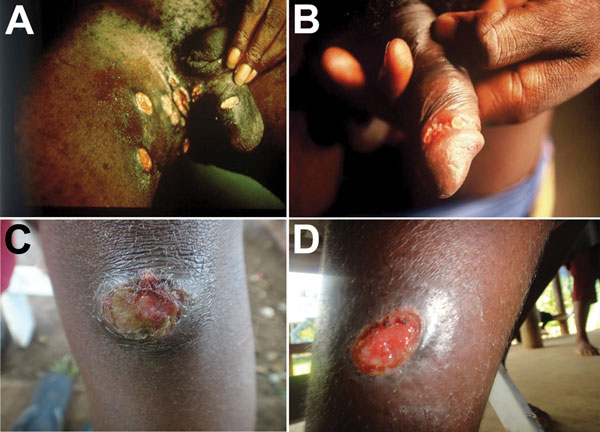Volume 22, Number 1—January 2016
CME ACTIVITY - Synopsis
Epidemiology of Haemophilus ducreyi Infections
Figure 2

Figure 2. Ulcers caused by infection with Haemophilus ducreyi. A, B) Genital ulcers in adult patients from Ghana (provided by David Mabey). C, D) Skin ulcers in children from Papua New Guinea (provided by Oriol Mitjà).
Page created: December 17, 2015
Page updated: December 17, 2015
Page reviewed: December 17, 2015
The conclusions, findings, and opinions expressed by authors contributing to this journal do not necessarily reflect the official position of the U.S. Department of Health and Human Services, the Public Health Service, the Centers for Disease Control and Prevention, or the authors' affiliated institutions. Use of trade names is for identification only and does not imply endorsement by any of the groups named above.